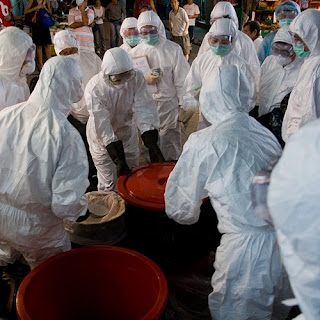Here's a list of the most dreadful diseases of All-Times.
Diseases have claimed millions of lives from all over the world since the beginning of History. There were more people who died of diseases than people who died during the many wars that happened anywhere else in the world.
- Smallpox
Smallpox is the deadliest disease in the world. In the 20th century alone there were approximately 500,000,000 people who died of this disease. This infectious disease is caused by either Variola major or Variola minor. Smallpox is believed to have emerged in human populations 12,000 years ago. The disease killed an estimated 400,000 Europeans each year during the 18th century and was responsible for a third of all blindness. Of all those infected, 20–60%—and over 80% of infected children—died from the disease. To this day, smallpox is the only human infectious disease to have been completely eradicated.
2. Malaria
Malaria is one of the deadliest diseases in the world killing about 80,000,000–250,000,000 people worldwide from the 20th century to present alone. This infectious disease caused by protozoan parasites is widespread in tropical and subtropical regions. Each year, there are approximately 350–500 million cases of malaria, killing between one and three million people mostly from Africa.
3. Measles
More or less 200,000,000 people have died worldwide from the killer disease Measles in the last 150 years. It is an infection of the respiratory system caused by paramyxovirus. Fever, cough, runny nose, red eyes are its most common symptoms. Measles is spread through respiration and is highly contagious—90% of people without immunity sharing a house with an infected person will catch it
.
4. Bubonic Plaque
Approximately 150,000,000 people were killed worldwide by Bubonic Plague from 1300s to 1950s. This disease is caused by the bacterium Yersinia pestis. This dreaded disease kills about half of infected patients in 3–7 days without treatment, and is believed by many to be the Black Death that swept through Europe in the 1340s and killing millions.
5. Spanish Influenza
The deadly Spanish Flu had claimed 50,000,000–100,000,000 lives worldwide from 1918 to1919 only. This
disease spread nearly every part of the world. It was caused by an unusually virulent and deadly influenza A virus strain of subtype H1N1. The pandemic that occurred from 1918 to 1920 killed 50 to 100 million people were killed worldwide and an estimated 500 million people or1/3 of the world’s population (approximately 1.6 billion at the time), became infected.
Tuberculosis or TB had claimed 40,000,000–100,000,000 lives worldwide from the 20th century to
present. This is a common and often deadly infectious disease caused by mycobacteria and usually attacks the
lungs but can also affect the central nervous system and others.
7. Cholera








